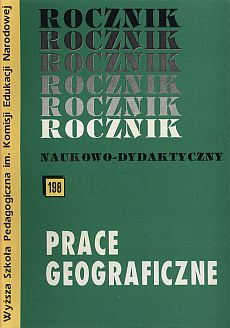Demographic changes in India
Abstract
The article aims at presentation of demographic changes of Indian states and territories including population growth also demographic structures and vital statistics on the background of social conditions in the years 1971-1981.
Present demographic changes performing in India consisting mainly in fertility and mortality decline affect decrease in population growth rate. However, considering very young age struture, continued population growth is unavoidable. Spatial differentation of demographic processes in India is reflected in different social relations prevailing in the northern and southern part of the country.
References
Barret H., O’Hare G. (1992). This changing world India counts its people. Geography, 77.
Holzer J. Z. (1994). Demografia. PWE, Warszawa.
India: Health and Family Welfare. Data from the National Family Health Survey, 1992-1993, 1996. International Institute for Population Sciences, Mumbai.
Jagielski A. (1977). Geografia ludności. PWN, Warszawa.
Visaria L., Visaria P. (1995). India’s population in transition. Population Bulletin, vol. 50, no. 3, Population Reference Bureau.
World Factbook (1996). Central Intelligence Agency, Washington.
Downloads
Issue
Section
License
The submission of a paper to be published is synonymous with an agreement to transfer the copyright free of charge from the author to the publisher. The author also agrees to permit the publisher to publish the paper in printed form, open access online form, digital library form and other digital platforms with which the publisher has or will have a publishing agreement. Furthermore, the author agrees to not limit the number of copies that may be printed or issued by the publisher. In the case of co-authored papers, it is assumed that the corresponding author is authorized to represent the remaining co-authors in this respect. Authors are requested to sign a copyright declaration.

